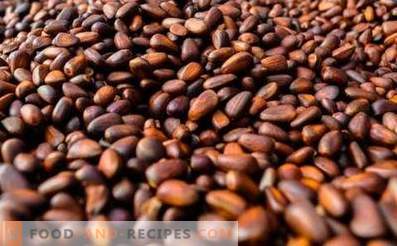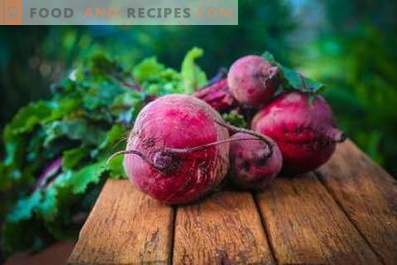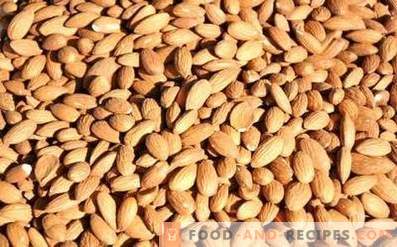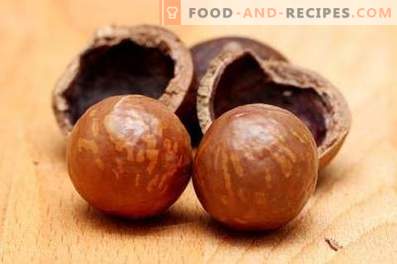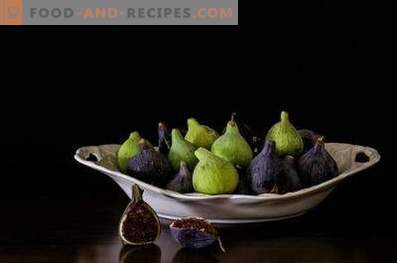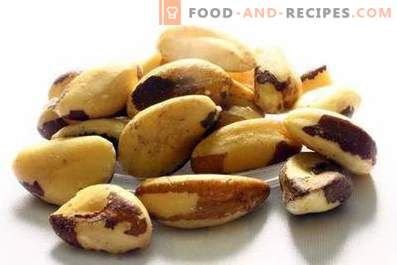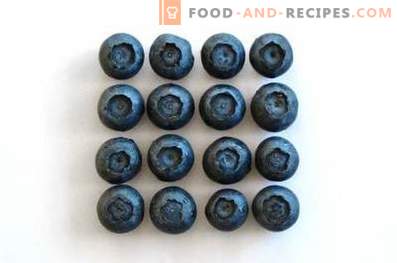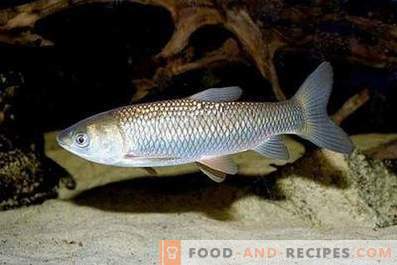
Hazelnuts (or hazelnuts) is the name used to designate the fruits of all plants belonging to the Hazel family of the Birch family. Nevertheless, hazelnuts are often called large hazelnuts (Latin name - Corylus maxima), which grows in Asia Minor and in the south-eastern part of Europe. The plant is widely distributed in the Balkan Peninsula, in Turkey, Italy, Germany, Sweden, France and North America.
Hazel is a large shrub or tree, reaching 10 meters in height. The trunk of the plant is covered with smooth ash-gray bark. The green or dark red leaves of large hazel have a heart-shaped or oval shape, reaching 100 mm in width and 120 mm in length. Oblong-cylindrical fruits of the plant, reaching 25 mm in length and 15 mm in diameter, are clustered on long stalks. Nuts are fully ripe by September.
Bream large has long been cultivated as a nut plant. The fruits of this culture are eaten raw, dried, roasted, used in the confectionery, alcohol and food industries. Vegetable oil is squeezed out of hazelnut, which is used in cooking, as well as in the perfumery, paintwork and soap production. In addition, large hazelnut nuts are used in alternative medicine to combat a number of pathologies.
Nutritional value of hazelnuts and vitamins in its composition
Nutritional value hazelnuts (per 100 g):
- 14, 999 g of proteins;
- 61, 439 g of fat;
- 9, 311 g of carbohydrates;
- 5, 887 g of dietary fiber;
- 5, 704 g of dextrins, starch;
- 4, 781 g of water;
- 3, 397 g of ash;
- 3, 589 g of sugars (mono-, disaccharides);
- 6, 744 g of omega-6 fatty acids.
Vitamins in hazelnuts (based on 100 g):
- 67, 944 µg of folate (vitamin B9);
- 1, 981 µg of retinol equivalent (vitamin A);
- 0.097 mg of riboflavin (vitamin B2);
- 5, 197 mg of niacin equivalent (vitamin PP);
- 20, 311 mg of alpha-tocopherol, tocopherol equivalent (vitamin E);
- 1, 144 mg of pantothenic acid (vitamin B5);
- 0, 009 mg of beta-carotene;
- 0, 294 mg of thiamine (vitamin B1);
- 14, 111 mcg of phylloquinone (vitamin K);
- 1, 391 mg of ascorbic acid (vitamin C);
- 0, 693 mg of pyridoxine (vitamin B6);
- 44, 949 mg of choline (vitamin B4).
Hazelnut Calories
Hazelnut is an extremely high-calorie product. In order to satisfy the adult’s daily energy requirement, it’s enough to eat four small handfuls of hazelnuts, shelled.
- Hazelnut calories (100 g) - 652, 104 kcal.
- The energy value of a hazelnut nut (average weight - 3 g) - 19, 563 kcal.
- Caloric content of oil squeezed from hazelnuts (100 g) - 871, 997 kcal.
Useful elements in the composition of hazelnuts
Macroelements in hazelnuts (per 100 g):
- 716, 944 mg of potassium;
- 189, 755 mg of sulfur;
- 21, 494 mg of chlorine;
- 2, 998 mg of sodium;
- 171, 884 mg of magnesium;
- 298, 716 mg of phosphorus;
- 169, 816 mg of calcium.
Trace elements in hazelnuts (per 100 g):
- 2, 439 mg of zinc;
- 2, 991 mg of iron;
- 1119, 716 μg of copper;
- 12, 211 mcg of cobalt;
- 16, 776 μg of fluorine;
- 4, 116 mg of manganese;
- 2, 397 mcg of selenium;
- 0, 191 mkg of iodine.
Useful properties of hazelnuts
- Hazelnuts are a rich natural source of vegetable protein, indispensable for vegetarian food.
- Hazelnut contains potassium, calcium, polyunsaturated fatty acids and other substances that accelerate the elimination of excess cholesterol from the body, strengthen the walls of blood vessels, have a beneficial effect on the work of the myocardium and reduce the risk of developing heart disease. Regular consumption of them in food contributes to the weakening of the manifestations of thrombophlebitis and varicose veins.
- Substances present in the composition of hazelnuts have a beneficial effect on the functioning of the blood system. The fruits of hazel helps to improve the general condition of persons suffering from anemia and other blood diseases.
- Regular consumption of hazelnuts in food helps to reduce the risk of putrefactive processes in the digestive tract, to cope with the symptoms of flatulence.
- Hazelnut has tonic properties, boosts immunity and helps the body to resist bacterial, viral infections and parasitic invasions.
- Hazelnuts contain compounds that accelerate the process of excretion of toxins and other harmful substances that help cleanse the liver.
- Hazelnuts are rich in B vitamins, which are the most important links in protein, fat, carbohydrate and energy metabolism. Regular consumption of hazelnuts allows you to speed up the metabolic processes in the body and prevent the development of metabolic disorders.
- Potassium contained in hazel fruits helps to normalize blood pressure. For this reason, nutritionists advise people suffering from hypertension to include hazelnuts in their diet.
- Useful compounds present in the kernels of hazel fruits have a positive effect on the work of the central nervous system and the human peripheral nervous system. To reduce excessive nervous excitability, getting out of a depressive state and alleviating the adverse effects of stressful situations on the functioning of internal organs, it is enough to eat 5-6 hazelnut kernels every day.
- A slurry of pounded hazelnuts, diluted with warm water, has expectorant properties and can be used as an adjunct in the treatment of diseases of the bronchi and lungs.
- Regular consumption of slurry of pounded nuts with honey helps to relieve rheumatic pains.
- The compounds present in the composition of fresh hazelnuts help to cope with the pathological enlargement of the prostate gland with prostatitis.
- Hazelnuts contain ingredients that contribute to the production of breast milk in women.
- It has been proven that regular consumption of hazelnuts promotes the resorption of stones in the tissues of the kidneys.
- Hazelnut has tonic properties, helps improve performance, cope with the manifestations of chronic fatigue syndrome.
Useful properties of hazelnut oil
- Oil squeezed from hazelnuts is used in alternative medicine for the treatment of burns (including sunburns). For the preparation of an agent capable of alleviating burn symptoms, nut butter is whipped with egg white.
- Oil squeezed from hazelnuts is an excellent anthelmintic agent.
- Vitamins and minerals contained in hazelnut oil help to improve bone structure, thereby preventing the development of osteochondrosis and other bone diseases.
- Regular consumption of hazelnut oil contributes to an increase in visual acuity and helps prevent the development of a multitude of disturbances in the functioning of the visual apparatus.
- Hazelnut oil helps recuperate after heightened mental or physical stress.
- Vitamin E and other compounds present in the composition of hazelnut oil, slow down the aging process in the body.
- Oil squeezed from hazelnuts can be used to heal dry, brittle hair. The remedy should be rubbed into the scalp with light massaging movements, then spread over the entire length of the hair and leave for 60-90 minutes.
- Hazelnut oil is used in cosmetology as a tool that can improve complexion, cope with acne and acne, effectively clean and tighten pores, relieve irritation and redness on the surface of the skin, effectively moisturize the skin and fight the first signs of aging. smoothing fine wrinkles.
- Oil, squeezed from hazelnuts, is used as a means for massage, effectively moisturizing the skin and giving it elasticity, promoting the elimination of cellulite.
- Hazelnut oil has a positive effect on the reproductive system, reduces the unpleasant symptoms of premenstrual syndrome in women and increases the potency in men. Zinc, present in its composition, activates the production of sex hormones in both sexes. To achieve a therapeutic effect, it is enough to take a teaspoon of oil daily.
Contraindications and harmful properties of hazelnuts
- According to nutritionists, the daily rate of consumption of hazel fruits for an adult is 50 g. Abuse of hazelnuts can lead to spasm of brain vessels and provoke the occurrence of severe migraines.
- Hazelnut is a widespread allergen. Individual intolerance to the fruits of hazel is an absolute contraindication to their consumption. Allergy sufferers should take into account that a direct relationship has been established between the presence of hazelnut allergy and other types of nuts.
- Hazelnuts are contraindicated in children suffering from atopic diathesis, severe liver disease, and complicated forms of diabetes.
- Hazelnut is a high-fat product. Abuse of hazelnuts contributes to a set of excess weight.
